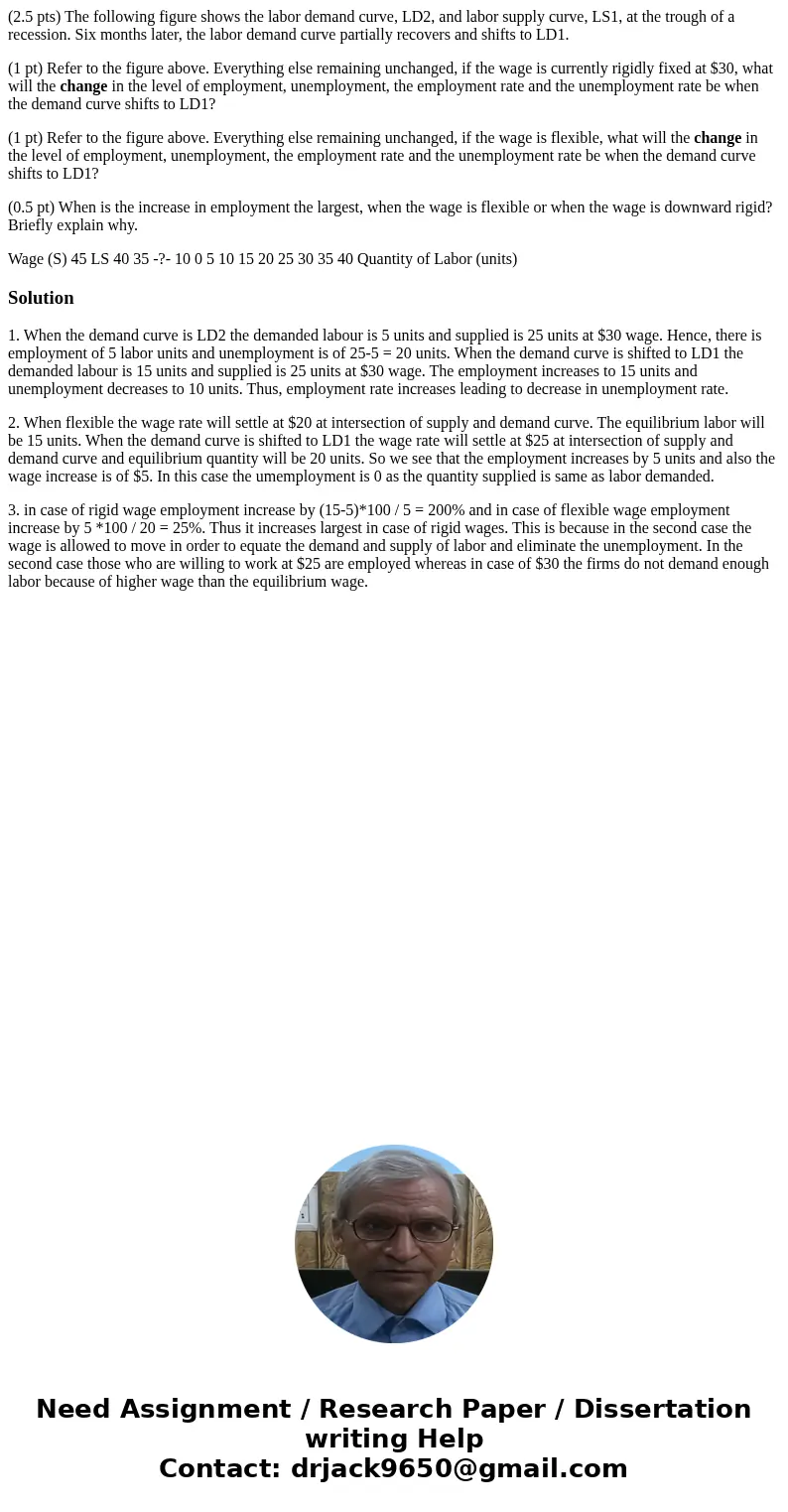25 pts The following figure shows the labor demand curve LD2
(2.5 pts) The following figure shows the labor demand curve, LD2, and labor supply curve, LS1, at the trough of a recession. Six months later, the labor demand curve partially recovers and shifts to LD1.
(1 pt) Refer to the figure above. Everything else remaining unchanged, if the wage is currently rigidly fixed at $30, what will the change in the level of employment, unemployment, the employment rate and the unemployment rate be when the demand curve shifts to LD1?
(1 pt) Refer to the figure above. Everything else remaining unchanged, if the wage is flexible, what will the change in the level of employment, unemployment, the employment rate and the unemployment rate be when the demand curve shifts to LD1?
(0.5 pt) When is the increase in employment the largest, when the wage is flexible or when the wage is downward rigid? Briefly explain why.
Wage (S) 45 LS 40 35 -?- 10 0 5 10 15 20 25 30 35 40 Quantity of Labor (units)Solution
1. When the demand curve is LD2 the demanded labour is 5 units and supplied is 25 units at $30 wage. Hence, there is employment of 5 labor units and unemployment is of 25-5 = 20 units. When the demand curve is shifted to LD1 the demanded labour is 15 units and supplied is 25 units at $30 wage. The employment increases to 15 units and unemployment decreases to 10 units. Thus, employment rate increases leading to decrease in unemployment rate.
2. When flexible the wage rate will settle at $20 at intersection of supply and demand curve. The equilibrium labor will be 15 units. When the demand curve is shifted to LD1 the wage rate will settle at $25 at intersection of supply and demand curve and equilibrium quantity will be 20 units. So we see that the employment increases by 5 units and also the wage increase is of $5. In this case the umemployment is 0 as the quantity supplied is same as labor demanded.
3. in case of rigid wage employment increase by (15-5)*100 / 5 = 200% and in case of flexible wage employment increase by 5 *100 / 20 = 25%. Thus it increases largest in case of rigid wages. This is because in the second case the wage is allowed to move in order to equate the demand and supply of labor and eliminate the unemployment. In the second case those who are willing to work at $25 are employed whereas in case of $30 the firms do not demand enough labor because of higher wage than the equilibrium wage.

 Homework Sourse
Homework Sourse